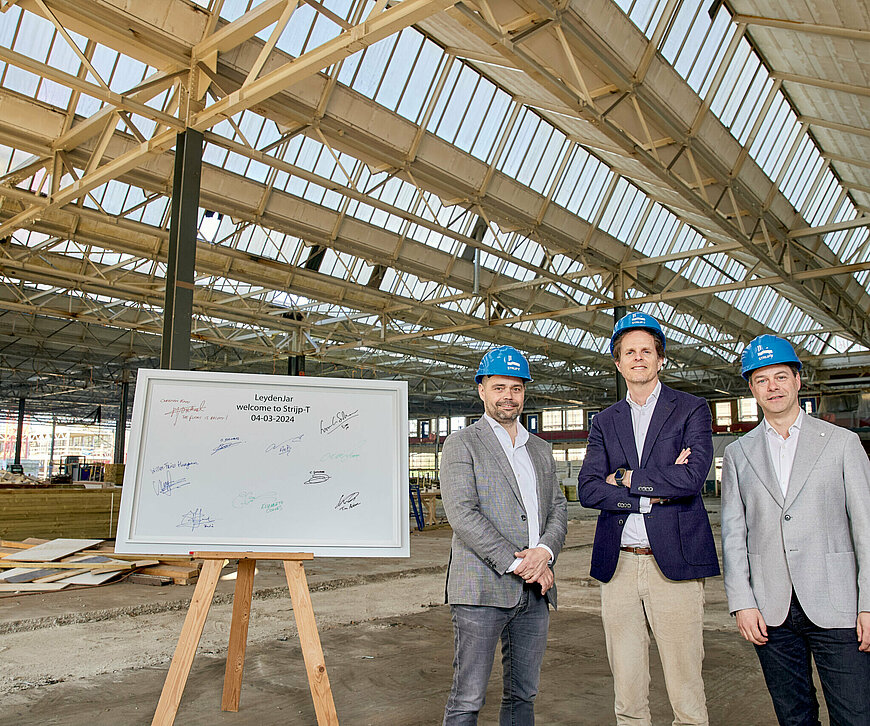LeydenJar Technologies Chooses Eindhoven Strijp-T for its First Anode Factory

Dutch battery innovator LeydenJar Technologies will build its first factory at Strijp-T in Eindhoven. Set to open in 2026, LeydenJar’s PlantOne provides a production capacity of 70 MWh pure silicon anode for high energy density batteries.
LeydenJar anodes are integrated into lithium-ion batteries, enabling dramatically increased capacity and fast-charging capabilities. Being 70% higher in energy density than conventional anodes and up to 10x thinner, LeydenJar anodes pave the way for new products and innovations in the automotive and consumer electronics industry. Phones, laptops and electric vehicles become lighter in weight, more compact and longer lasting on a single charge. What’s more, climate change impact of production is reduced by up to 85% compared to conventional graphite anodes.
Strijp-T in the Heart of Eindhoven’s Innovation District
LeydenJar PlantOne will occupy part of the landmark 270-meter-long ‘’TX’’ building at Strijp-T. Once a Philips manufacturing facility, the site is currently undergoing renovation by GEVA Vastgoed as part of a growing innovation ecosystem.
PlantOne will open in 2026, producing an annual capacity of 70 MWh pure silicon anode foil: enough for four million smartphone batteries. The production tools that will be used in the facility are developed in-house by LeydenJar. PlantOne serves the growing needs of LeydenJar anode customers in the consumer electronics industry, for products such as drones, smartwatches, phones and laptops.
Eindhoven was selected due to the city’s worldwide status as a thriving center for innovation and cutting-edge research.
“Eindhoven’s dynamic environment fosters synergy between universities, research institutes and industrial companies, from which we can benefit in our current growth phase”
Christian Rood, CEO LeydenJar
“This is an important step for the ambitions of the Dutch battery ecosystem. Companies and organizations on a national scale benefit from unique competences that are clustered in Brainport, which enable our country to develop next-generation batteries and the production processes that are needed for it”, adds Paul van Nunen, director of Brainport Eindhoven, the “silicon valley” of the Netherlands.
LeydenJar announced the construction of PlantOne back in December 2022 after receiving €30 million in funding from the European Investment Bank.
Accelerating Energy Transition
The commissioning of PlantOne will unlock a wealth of opportunities to foster a greener, more innovative future for the Netherlands and Europe. The climate change impact of anode production is minimized, and the electrification of our society is accelerated through record-high energy density.
LeydenJar’s strategic direction goes beyond PlantOne. The company plans further expansion to meet the rapidly growing demand for high-performance batteries.
“When I founded this company, my dream was to have silicon anodes across all battery applications to accelerate the transition to green energy. PlantOne is a major step towards the use of our silicon anodes in consumer electronics and we envision growth into the electric vehicle market in the future.”
Christian Rood
With this expansion, LeydenJar aims to facilitate the electrification of our society to reduce greenhouse gas emissions and contribute to meeting the EU goal of being net zero by 2050.
